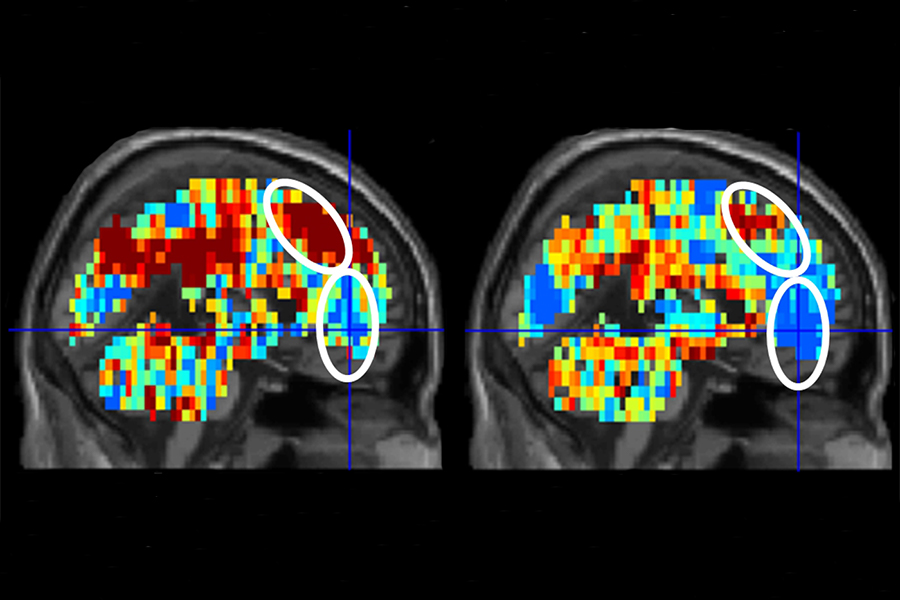
On the left is the brain activation pattern for “death” in participants who had made a suicide attempt. The image in the right depicts the activation pattern for “death” in control participants. Credit: Carnegie Mellon University
Suicide is the second-leading cause of death among young adults in the United States. Equally troubling, suicide risk is hard to assess and predict. But what if you can identify risk by analyzing the alterations in how a patient’s brain represents certain concepts?
A research team from Carnegie Mellon University and the University of Pittsburgh have developed an innovative way to identify suicidal individuals—with the help of brain scans and artificial intelligence.
Their study, published in Nature Human Behavior, found “neural signatures” that can tell whether someone is considering suicide.
Building on previous work in machine learning to identify what people are thinking, Marcel Just, an author of the paper and the D. O. Hebb professor of cognitive neuroscience at Carnegie Mellon University, theorized that brain patterns may reveal a difference in the way suicidal patients think.
“Our latest work is unique insofar as it identifies concept alterations that are associated with suicidal ideation and behavior, using machine-learning algorithms to assess the neural representation of specific concepts related to suicide,” says Just, the D.O. Hebb University Professor of Psychology in CMU’s Dietrich College of Humanities and Social Sciences. “This gives us a window into the brain and mind, shedding light on how suicidal individuals think about suicide and emotion related concepts.”
For the study, Just, David Brent, professor of psychiatry, pediatrics, epidemiology and clinical and translational science at Pitt, and their team used the machine-learning algorithms (Gaussian Naïve Bayes) to identify suicidal individuals.
Participants included 17 patients with suicidal ideation and 17 individuals who were neurotypical as a control. Word concepts were presented to the two groups while they were undergoing functional magnetic resonance imaging (fMRI). Participants were asked to think about the word concepts for three seconds while their brain activity was recorded. Words presented as stimuli were categorized into three groups: suicide (e.g., death) positive (e.g., carefree, kindness), or negative (e.g., trouble).
The resulting data was fed to a machine learning program which looked for brain patterns that distinguished between the two groups. The program was able to identify with 91 percent accuracy whether a participant was from the control or suicidal group. What’s more, the program was able to identify those who had previously attempted suicide with 94 percent accuracy.
While the study was small, and more research is needed to validate the findings, the researchers hope their findings will one day save lives.
“Further testing of this approach in a larger sample will determine its generality and its ability to predict future suicidal behavior, and could give clinicians in the future a way to identify, monitor and perhaps intervene with the altered and often distorted thinking that so often characterizes seriously suicidal individuals,” said Brent.




